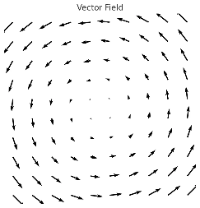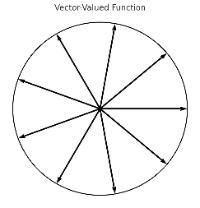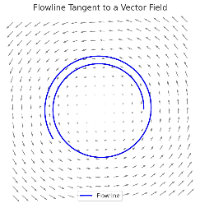Vector Fields
Vector value functions
Bounded above for any solution
Let
- Vector Field: A grid of arrows representing the field, with their tails anchored at points in space and directions/magnitudes defined by the vector field. Can be thought of as

- Vector-Valued Function: A set of vectors originating from the origin, with their tips tracing out a curve.

Flowline
if

Differential Operators
Gradient
if
Gradient Field
is a gradient field if
Divergence
div(
Source
if div(
Sink
if div(
Curl
cur(
and = 0 if
Conservative Vector Field
where are curves with the same end points - curl(F) = 0
There exist both:
A scalar potential g such that
A vector potential
if
Curl-free (
Divergence-free (